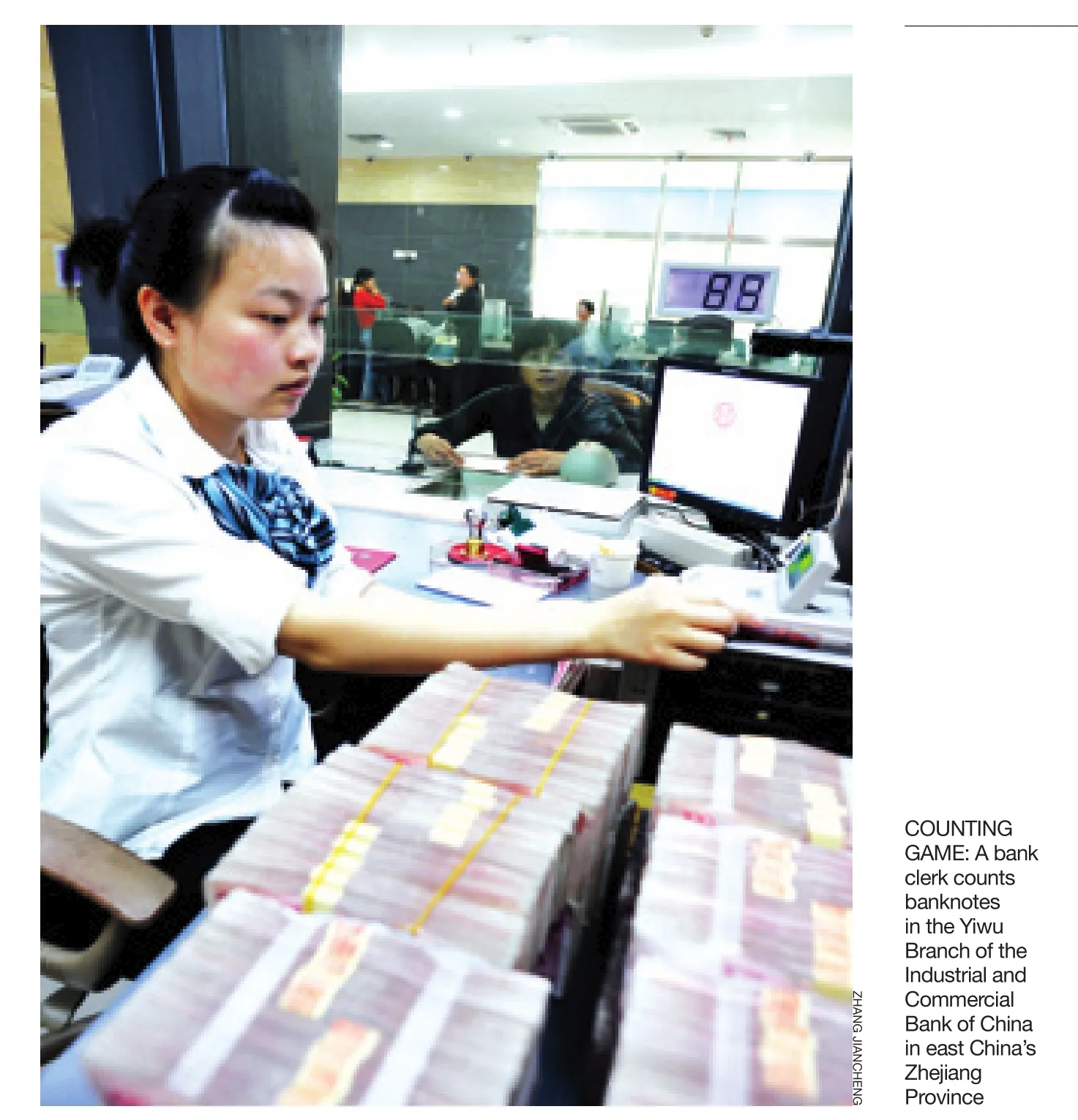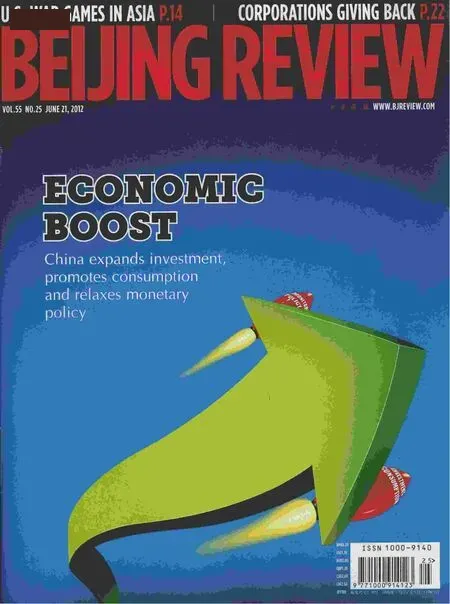Market-Oriented Interest Rates
Market-Oriented Interest Rates
China’s central bank cut interest rates for deposits and loans and adjusted their floating ranges on June 8. Yi Xianrong, a research fellow with the Institute of Finance and Banking under the Chinese Academy of Social Sciences, shared his views on the impact of the cut with Shanghai Securities News. Edited excerpts follow:

The People’s Bank of China, the central bank, just took a major step in the market-oriented reform of interest rates, but it’s difficult to say how far the government can go with the reform.
The central bank cut deposit and lending interest rates by 0.25 percentage points and extended the floating range of the rates, in the hope of curbing the downward trend in economic growth. This is a strong signal to the market: The government is resolute in maintaining stable economic growth.
Deposit rates can float up, which is a significant step in the market-oriented reform of interest rates and helps establish depositors’principal position in the banking system
The purpose
But the interest rate cut is far beyond market expectations. For one thing, it’s the first time the central bank adjusted the floating range for deposit and lending rates, which indicates the likely cyclical turns in the country’s monetary policy and an important step in its market-oriented reform of interest rates. For another, in its first-quarter monetary policy report released in April, the central bank said it preferred quantitative instruments rather than price ones to meet the liquidity demands of the real economy, and hoped to bring money supply and credit growth to normal through pre-emptive adjustments and fine-tuning of the monetary policy. Given the current economic climate, the GDP growth decline was one of the macro-control targets, and the fall in the growth of consumer price index (CPI) suggested residents’ deposit interest rates are getting out of the negative territory.
When the April statistics were published, the government began to fine-tune economic policies to stabilize growth. Then, the market expected the central bank to loosen the monetary policy as soon as possible to reduce downside risks to economic growth. In such a context, preceding the release of May statistics, the central bank decided to resort to price instruments by lowering deposit and lending rates, responding to the requirement of stabilizing growth, as well as mustering up courage to revitalize domestic economic development.
Despite increasingly severe downside risks to economic growth, there is no reason for the cyclical turns of the monetary policy. In fact, the GDP growth dip is part of the expected outcome of the government’s macro-control policies. To solve the major contradictions in economic development and secure sustainable and stable economic growth in the mid- and long-term, adjustments need to be made in industrial structure and economic strategies, reducing the overdependence on the real estate industry. In this sense, economic growth slowdown seems inevitable.
Under the current circumstances, the decline of CPI growth cannot give rise to cyclical turns of the central bank’s monetary policy. There is no denying that the fall in CPI growth leaves more space for the central bank to cut interest rates, but in the past decade, Chinese residents deposit their money at negative interest rates, so if the bank cuts interest rates once they become positive, its intention will be evident.
Some people say, the CPI growth decline and the negative growth of PPI indicate a risk of deflation. In this regard, interest rate cut should be made in preparation for a rainy day. Even if the central bank has this objective in mind, it’s unnecessary to be so sensitive to possible deflation. Moreover, under the current financial system, cutting deposit and lending rates only exerts a limited influence on the reduction of financing cost, because it’s quite difficult for small and medium-sized enterprises (SMEs) to get low-rate loans, and the interest rates are still as high as 20 percent in the private credit market. Depositors won’t spend a lot because of the interest rate cut. Thus, the central bank targets at stabilizing GDP growth this time. For now, the Chinese economy cannot endure a plunge of the growth rate.

The highlight
The interest rate cut this time is asymmetric, which is reflected in the floating range. Deposit rates can be raised by 10 percent above the benchmark rate, and lending rates can be lowered by 20 percent below the benchmark rate. Most importantly, deposit rates can float up, which is a significant step in the market-oriented reform of interest rates and helps establish depositors’ principal position in the banking system. Depositors can have more choices when choosing banks to deposit their money. To attract more money, banks have to raise deposit rates to a reasonable level, constantly improve service attitude and choose more convenient locations, which will also fuel inter-bank competitions.
Nevertheless, the extension of lending rate floating range will not bring about major changes to banks. First, since free from problems like lack of lenders for the time being, banks are reluctant to introduce loans into high-risk industries. Second, banks have changed the timing of lending and distributed loans more evenly during the year instead of extending large amounts of money at the beginning of the year and tightening credit at the end of the year. Third, the interest rates in the private credit market in Wenzhou, Zhejiang Province, are still above 21 percent, which implies the inadequacy of credit. It’s difficult to get loans at current levels of interest rates, not to mention the situation after downward adjustments. In the first quarter of this year, loans with an interest rate lower than the benchmark rate accounted for no more than 5 percent of the total. With lowered lending rates, competitions for loans will become fiercer than expected.
Now, domestic enterprises care little about the interest rates, but focus their attention on the way of getting money from banks. Although cutting interest rates can lower the financing cost of enterprises, whether it can alleviate SMEs’ financing difficulties is uncertain, because state-owned enterprises are more likely to lay their hands on low-cost loans.
Earlier this year, critics on the windfall profits earned by banks were overwhelming. People argued it’s unreasonable for banks to reap handsome profits by taking advantage of policies or government regulations. The interest rate cut is also targeted at squeezing banks’profit margins by narrowing the difference of deposit and lending rates. As the real deposit and lending rates are decided by a number of elements, such as negotiation between lenders and borrowers and the supply of credit, it’s impossible for policymakers to include all these into the policy framework. Therefore, further observation is needed to see the effect of the interest rate cut.

